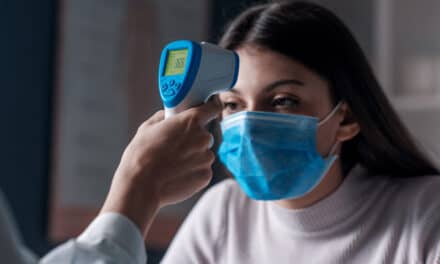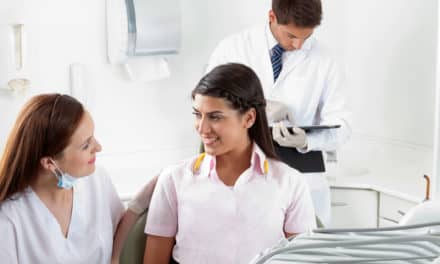And an 11-step action plan for your orthodontic practice’s recovery
By Roger P. Levin, DDS
If you’re like me, you’re getting news about the coronavirus all day and every day from news broadcasts, articles, social media, and even friends and family. Unfortunately, even with all the information I’ve collected, the only thing I know with certainty is that there is far more that is not known, than is known.
And things are even more confusing for orthodontic practices. Many practices may be shut down as you read this article. And depending on the different rules and protocols of each state, your own practice may be closed, operating under limited hours, or reopened only to be shut down again.
Despite all this uncertainty, now isn’t the time to simply sit back and wait and see what happens. As an orthodontist, you are a business owner with responsibilities to your staff and patients. You also owe it to yourself to be prepared to restart, re-energize, and reinvigorate your practice.
This crisis is different than other disastrous events such as hurricanes or forest fires because this is so much deeper in scope with far more devastating economic effects. Orthodontists will have to change the way they manage, think, and strategize in order to meet the needs of patients adversely affected by this crisis.
The Three Stages of the Coronavirus Crisis
To help you navigate your practice through this crisis, Levin Group has categorized the coronavirus crisis into the following three stages:
- Stage I: The coronavirus crisis
- Stage II: Entering recovery
- Stage III: Recovery
No one knows how long each one of these stages will last. Or if we will go from one stage to another and then back again. What seems to be best for now is for orthodontists to focus on the next stage while they are in the current stage.
Entering Recovery
While we are in Stage I, there are many things you can do to begin preparing for recovery. Consider these recommendations for recovery:
1. Stay close to your staff.
Remember, your staff members are like everyone else going through this crisis—anxious and fearful. This is a time for leadership, and when it comes to the orthodontic practice and team, you are the leader. Communicate with them often even if simply to say hello, touch base, or tell them that you’re preparing for recovery when it arrives.
2. Communicate with patients regularly.
Touch base with patients by phone, text, and social media about the status of the practice and the safety precautions you are taking. Many patients and parents will still be afraid to come to an orthodontic practice for some time. Let them know what you’re doing to keep them safe.
3. Write clear scripts.
For 36 years I have been including the concept of scripting in many of my orthodontic seminars and I’ve never seen a time when it’s been this essential. Orthodontic practices must clearly communicate messages about practice closings, limited hours, safety precautions, and postponed treatment. To avoid getting off message with complaints about how bad life is and the latest news on the coronavirus crisis, write your scripts for each stage of the coronavirus crisis.
4. Assess patients’ financial options.
Due to unemployment and downturns in the investment markets, some patients will find themselves unable to meet financial obligations and you’ll be forced to make some hard choices. Options include renegotiating payment plans with patients and patient financing. Access to debt will be more important than ever for many people and will allow patients to continue with orthodontic treatment. You will also have to decide if you’re willing to complete treatment at no continuing payments for some patients, and who qualifies for that. These choices aren’t fun to think about, but it is a good business protocol to identify these options now and be prepared. Keep in mind that as an orthodontic practice recovers some payments are better than no payments.
5. Check your supply chain and inventory.
As we know, there has been a shortage of many infection control products and hoarding of household items during this panicked time. I believe that things will even out, but it’s prudent to check with your distributors even while shut down to determine what they’re doing, what they’re projecting, and what they think you’ll be able to purchase. I also recommend that you begin to carry at least 25% more than you need on items that were in shortage should there be a coronavirus reoccurrence.
6. Answer the phone.
Be sure your phone is currently being answered by a team member during business hours. Do not use voicemail. This is a time to be accessible and helpful. Remember, during Stage II many people will be scrambling to fix their lives, deal with financial issues, overcome lingering illnesses, and catch up at work. Orthodontics is a priority for many, but not their only priority and you want to capture that patient call at the time when it is made.
7. Track and plan for overdue patients.
Contact all patients to come back to the practice as soon as you have hours available. Levin Group teaches the “3-3-3” method which dictates that you call every overdue patient at least 3 times once a week. Use scripting and emphasize all safety precautions. If a person tells you that they can’t afford the monthly payment, tell them that you have options that you can discuss with them at the office. If you can’t reach the patient in three phone calls, then try sending three text messages once a week and then three emails. If you still don’t reach them or they ignore you, move to a 90-day cycle. And remember to be flexible when scheduling. You can help to accommodate patients better by adding extra hours to the workday, working on typical days off and working on Saturdays. This may not be your preference, but you need to catch up patients quickly and improve collections.
8. Confirm appointments with cell phone calls, not just text messages.
If you can’t reach patients, leave them a scripted voice message that says you look forward to seeing them, reminds them of their appointment time, informs them about safety precautions, and tells them that you are there to take care of them and will discuss any needs they have when they come in. This is a time for personal contact rather than maximized efficiency.
9. Use social media to comfort patients.
When you’re back up and running, show patients a happy and active practice with fun pictures and posts about practice events, contests and giveaways. Many adults may still have high anxiety, but kids are drawn to fun in any situation. You could add a little sparkle to their lives while sending a message that your practice is back in action and ready to be of help and service.
10. Track your cash position and financial position.
Stay on top of finances daily, weekly, and monthly. There are many ways to conserve cash in Stage II and most orthodontic practices will be fine if they follow the right protocols.
11. Remember referring doctors.
One of the most important aspects is not to forget your referring doctors. They can quickly begin to refer patients with orthodontic need. They will gravitate to specialists who work to provide real solutions during this uncertain time. Think about providing practice management recovery support materials that allow them to get back on their feet as quickly as possible. General practices will be be hit the hardest as some patients will not return for hygiene and preventative appointments either out of fear or financial distress. As they evaluate how to restart, reenergize and reinvigorate their own practices, they will have appreciation, admiration and loyalty to specialists that help to support them while maintaining a good relationship.
Summary
Remember, this is not a time to for a “wait and see” approach. Be proactive and take action. Regardless of how long it takes to move from Stage I to Stage II successfully, recovery will come, and you want to be ready and prepared.
I wish everyone health and safety. OP
Roger P. Levin, DDS, is the CEO and founder of Levin Group, a leading practice management consulting firm that has worked with over 30,000 practices to increase production. A recognized expert on orthodontic practice management and marketing, he has written 67 books and over 4,000 articles and regularly presents seminars in the United States and around the world. To contact Levin or to join the 40,000 dental professionals who receive his Ortho Practice Production Tip of the Day, visit levingroup.com or email [email protected].










